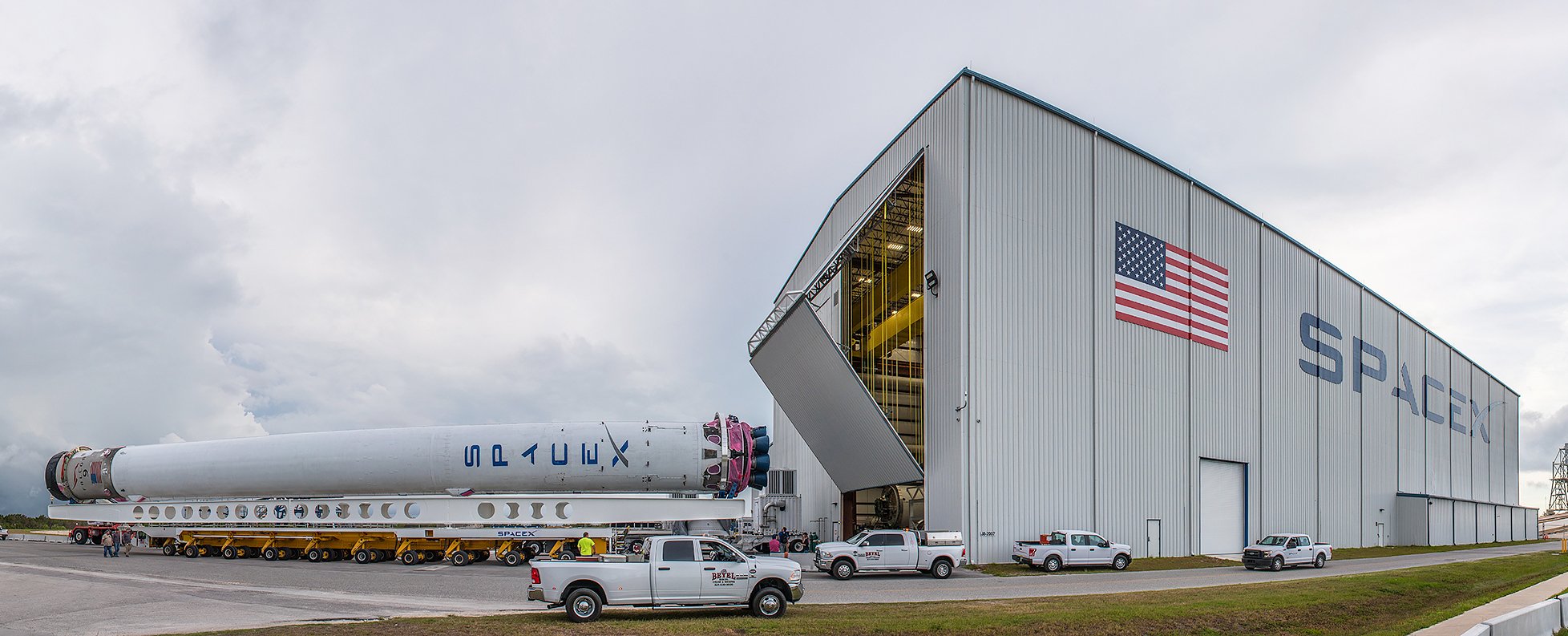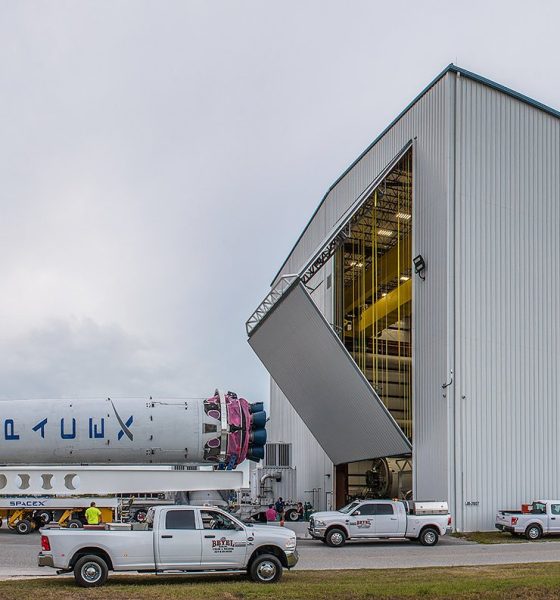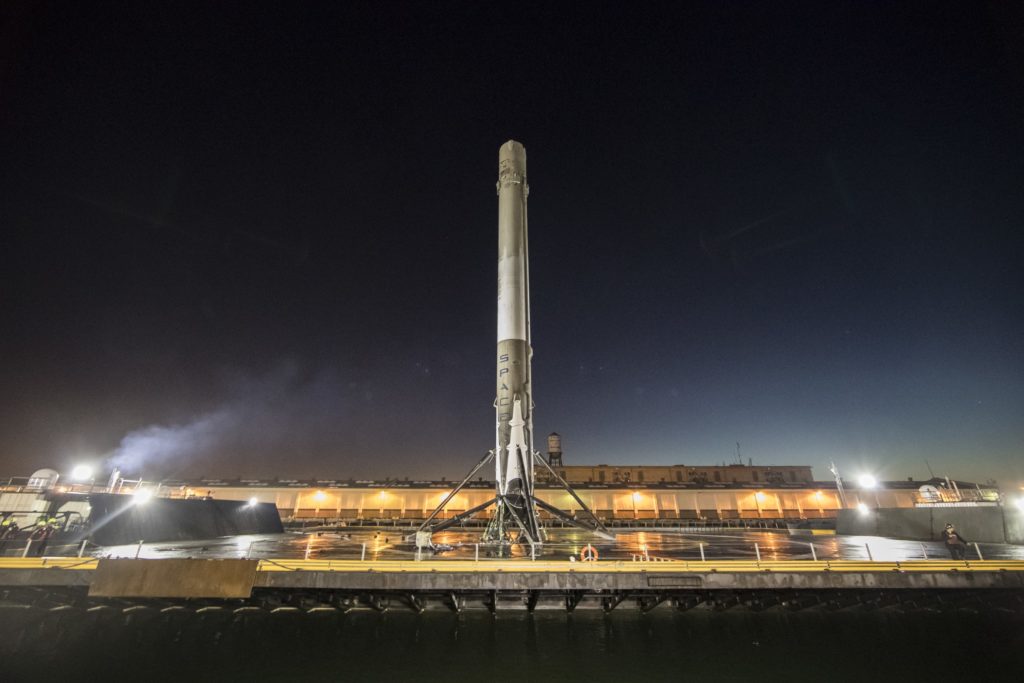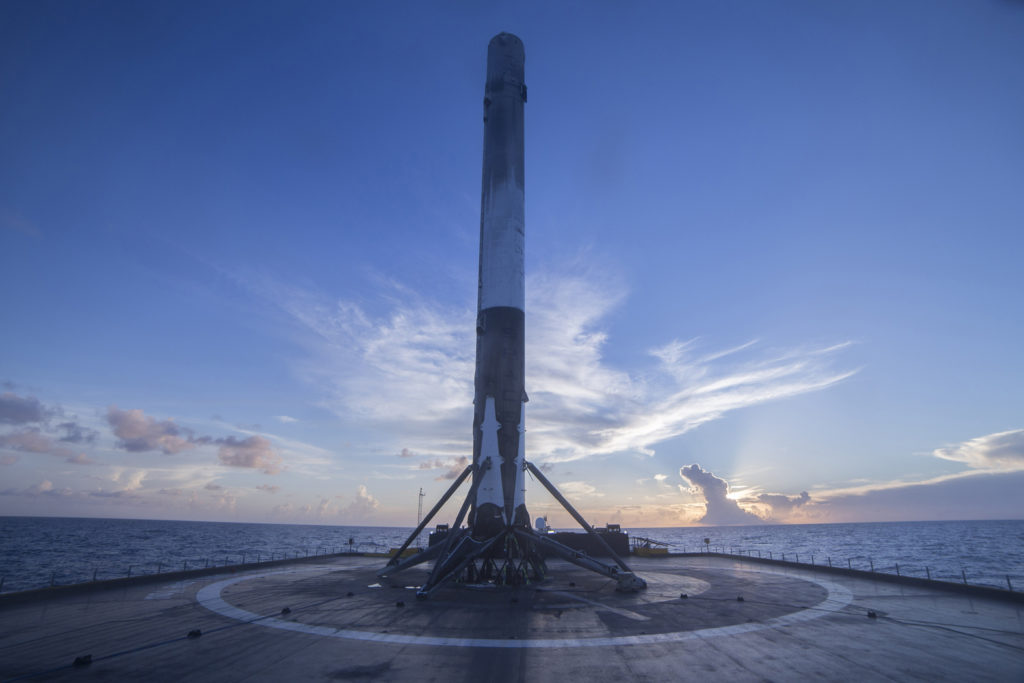

News
SpaceX on track for two Falcon 9 launches within 48 hours this week
As widely reported yesterday, SpaceX and Elon Musk have confirmed that the launch of BulgariaSat-1, initially scheduled for June 19, is being realigned to Friday or Saturday to allow SpaceX to replace a leaking valve inside the payload fairing. Musk reiterated that the second redundant valve was functioning perfectly, but tempered that fact with an abundance of caution.
BulgariaSat-1 was initially scheduled to launch on June 17th, but was delayed while the pad continued to be prepared after the launch of CRS-11 fourteen days earlier.
The current delay to the 23rd or 24th will very likely also push back the July 1st launch of Intelsat 35e. There are already semi-official hints that that launch has been delayed to no earlier than July 4th. While this may slightly muddy the waters of the weekly launch cadence SpaceX was preparing for, it also opens the door for an even more intriguing accomplishment: two launches in either 24 or 48 hours. Throughout the delays of BulgariaSat-1, the launch date of Iridium-2 has remain stoic and is still planned for June 25th, with a static fire on the 20th.

Core 1029 conducted its second successful pre-launch static fire on June 15th. BulgariaSat-1 is now scheduled for Friday, June 23rd. (SpaceX)
While the stability of Iridium-2’s West coast launch already began to tickle the imaginations of SpaceX’s ardent fans, the public announcement that the upcoming weekend could feature a launch “double-header” all but confirmed that SpaceX already has at least two completely independent launch teams. There’s been speculation that SpaceX will conduct weekly launches once the company has reactivated LC-40 at Cape Canaveral. Having redundant launch teams would be an absolute necessity for that to actually occur, with each pad currently taking an average of two weeks to be readied between launches.
With a public acknowledgement that SpaceX is even willing to consider two launches within 48 hours, let alone officially schedule those launches with confidence, speculation of weekly launch cadence has been all but confirmed as a likely reality for SpaceX in the near future. Possibly even more exciting is SpaceX’s unspoken confirmation that they could functionally conduct two launches in as little as 24 hours, an accomplishment that could garner the company’s oft repeated goal of a 24 hour launch cadence with incontrovertible evidence that SpaceX is dead serious about making that happen in the very near future.
- A Falcon 9 first stage recovered after the successful launch of the Iridium NEXT-1 mission. (SpaceX)
- and an East Coast recovery.
All things considered, the upcoming weekend and the week following are looking to be even more exciting and historic than I had previously hoped. Two launches and first stage recoveries in as few as 24 hours would be a truly remarkable accomplishment for SpaceX, and you can expect much more coverage on Teslarati as events unfold.

News
Tesla FSD fleet is nearing 7 billion total miles, including 2.5 billion city miles
As can be seen on Tesla’s official FSD webpage, vehicles equipped with the system have now navigated over 6.99 billion miles.

Tesla’s Full Self-Driving (Supervised) fleet is closing in on almost 7 billion total miles driven, as per data posted by the company on its official FSD webpage.
These figures hint at the massive scale of data fueling Tesla’s rapid FSD improvements, which have been quite notable as of late.
FSD mileage milestones
As can be seen on Tesla’s official FSD webpage, vehicles equipped with the system have now navigated over 6.99 billion miles. Tesla owner and avid FSD tester Whole Mars Catalog also shared a screenshot indicating that from the nearly 7 billion miles traveled by the FSD fleet, more than 2.5 billion miles were driven inside cities.
City miles are particularly valuable for complex urban scenarios like unprotected turns, pedestrian interactions, and traffic lights. This is also the difference-maker for FSD, as only complex solutions, such as Waymo’s self-driving taxis, operate similarly on inner-city streets. And even then, incidents such as the San Francisco blackouts have proven challenging for sensor-rich vehicles like Waymos.
Tesla’s data edge
Tesla has a number of advantages in the autonomous vehicle sector, one of which is the size of its fleet and the number of vehicles training FSD on real-world roads. Tesla’s nearly 7 billion FSD miles then allow the company to roll out updates that make its vehicles behave like they are being driven by experienced drivers, even if they are operating on their own.
So notable are Tesla’s improvements to FSD that NVIDIA Director of Robotics Jim Fan, after experiencing FSD v14, noted that the system is the first AI that passes what he described as a “Physical Turing Test.”
“Despite knowing exactly how robot learning works, I still find it magical watching the steering wheel turn by itself. First it feels surreal, next it becomes routine. Then, like the smartphone, taking it away actively hurts. This is how humanity gets rewired and glued to god-like technologies,” Fan wrote in a post on X.
News
Tesla starts showing how FSD will change lives in Europe
Local officials tested the system on narrow country roads and were impressed by FSD’s smooth, human-like driving, with some calling the service a game-changer for everyday life in areas that are far from urban centers.

Tesla has launched Europe’s first public shuttle service using Full Self-Driving (Supervised) in the rural Eifelkreis Bitburg-Prüm region of Germany, demonstrating how the technology can restore independence and mobility for people who struggle with limited transport options.
Local officials tested the system on narrow country roads and were impressed by FSD’s smooth, human-like driving, with some calling the service a game-changer for everyday life in areas that are far from urban centers.
Officials see real impact on rural residents
Arzfeld Mayor Johannes Kuhl and District Administrator Andreas Kruppert personally tested the Tesla shuttle service. This allowed them to see just how well FSD navigated winding lanes and rural roads confidently. Kruppert said, “Autonomous driving sounds like science fiction to many, but we simply see here that it works totally well in rural regions too.” Kuhl, for his part, also noted that FSD “feels like a very experienced driver.”
The pilot complements the area’s “Citizen Bus” program, which provides on-demand rides for elderly residents who can no longer drive themselves. Tesla Europe shared a video of a demonstration of the service, highlighting how FSD gives people their freedom back, even in places where public transport is not as prevalent.
What the Ministry for Economic Affairs and Transport says
Rhineland-Palatinate’s Minister Daniela Schmitt supported the project, praising the collaboration that made this “first of its kind in Europe” possible. As per the ministry, the rural rollout for the service shows FSD’s potential beyond major cities, and it delivers tangible benefits like grocery runs, doctor visits, and social connections for isolated residents.
“Reliable and flexible mobility is especially vital in rural areas. With the launch of a shuttle service using self-driving vehicles (FSD supervised) by Tesla in the Eifelkreis Bitburg-Prüm, an innovative pilot project is now getting underway that complements local community bus services. It is the first project of its kind in Europe.
“The result is a real gain for rural mobility: greater accessibility, more flexibility and tangible benefits for everyday life. A strong signal for innovation, cooperation and future-oriented mobility beyond urban centers,” the ministry wrote in a LinkedIn post.
News
Tesla China quietly posts Robotaxi-related job listing
Tesla China is currently seeking a Low Voltage Electrical Engineer to work on circuit board design for the company’s autonomous vehicles.

Tesla has posted a new job listing in Shanghai explicitly tied to its Robotaxi program, fueling speculation that the company is preparing to launch its dedicated autonomous ride-hailing service in China.
As noted in the listing, Tesla China is currently seeking a Low Voltage Electrical Engineer to work on circuit board design for the company’s autonomous vehicles.
Robotaxi-specific role
The listing, which was shared on social media platform X by industry watcher @tslaming, suggested that Tesla China is looking to fill the role urgently. The job listing itself specifically mentions that the person hired for the role will be working on the Low Voltage Hardware team, which would design the circuit boards that would serve as the nervous system of the Robotaxi.
Key tasks for the role, as indicated in the job listing, include collaboration with PCB layout, firmware, mechanical, program management, and validation teams, among other responsibilities. The role is based in Shanghai.
China Robotaxi launch
China represents a massive potential market for robotaxis, with its dense urban centers and supportive policies in select cities. Tesla has limited permission to roll out FSD in the country, though despite this, its vehicles have been hailed as among the best in the market when it comes to autonomous features. So far, at least, it appears that China supports Tesla’s FSD and Robotaxi rollout.
This was hinted at in November, when Tesla brought the Cybercab to the 8th China International Import Expo (CIIE) in Shanghai, marking the first time that the autonomous two-seater was brought to the Asia-Pacific region. The vehicle, despite not having a release date in China, received a significant amount of interest among the event’s attendees.










